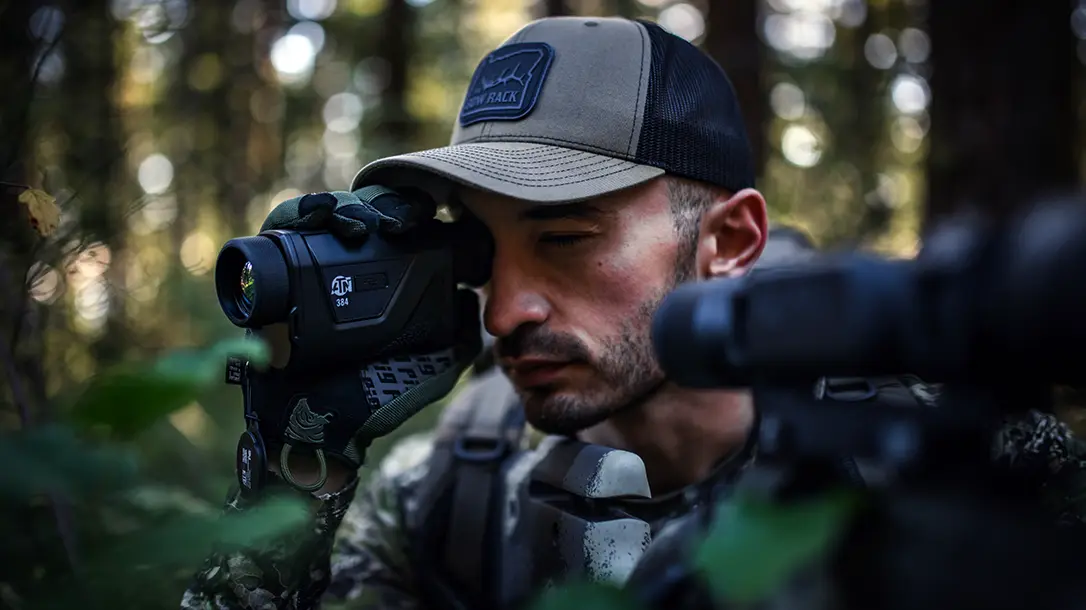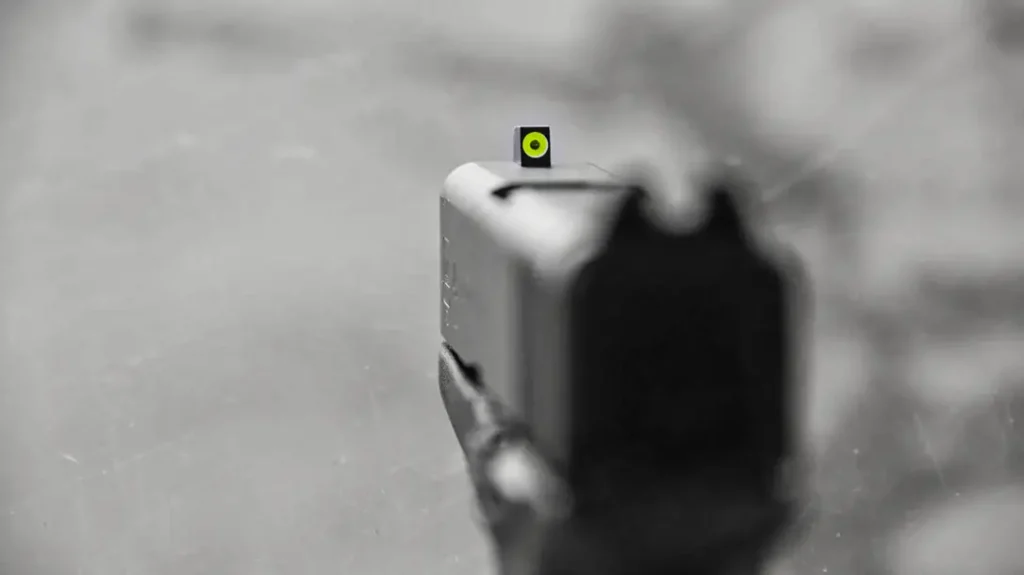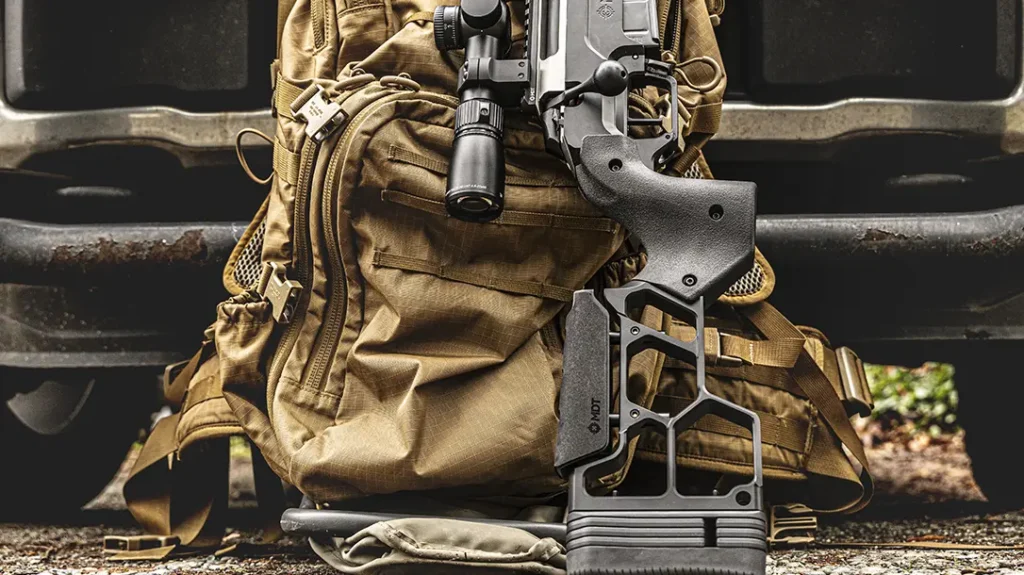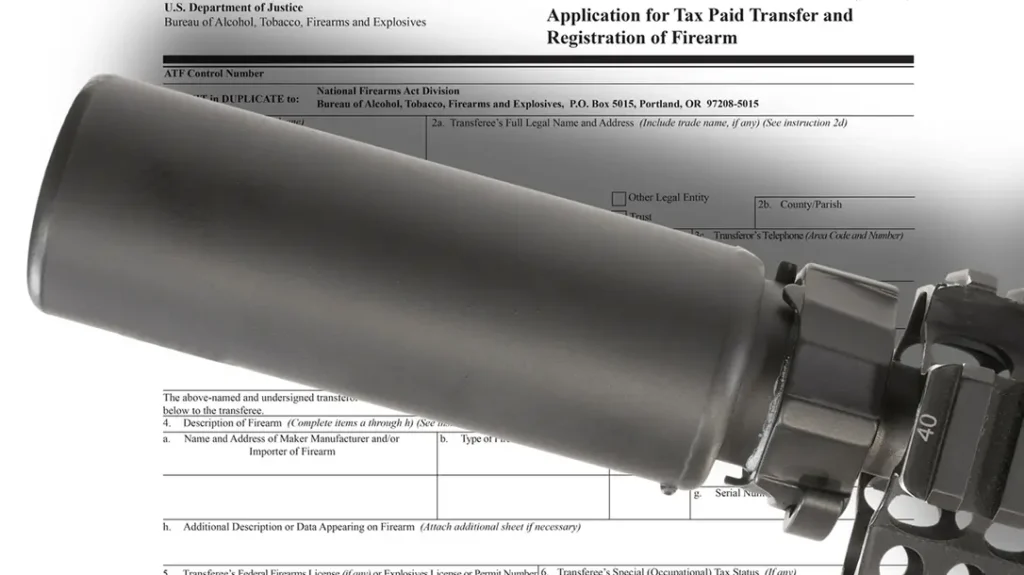After 25 years of playing with thermal scopes, some for the government and some for fun, I have some pretty strong beliefs on what makes a good scope. First, they need to be portable. Almost all of them are these days. When I started out one guy packed the scope, another the tripod, and a third guy carried the battery. Almost all of the scopes on the market these days are small enough to go in your pack and some can even fit in a pocket.
ATN BlazeHunter LRF
Second, the controls need to be easy to learn. Even if you own a thermal for several years, you aren’t going to be using it every day. Odds are, you will have to re-familiarize yourself with it each time you pull it out because it will typically be several months since the last time you used it. If you can’t intuitively relearn how to use it in a few minutes, it is too complicated.
Third, the controls need to be easy to find in the dark. I like big, tactile buttons or knobs on different parts of the thermal to make them distinct and easy to find. After staring at the screen of a thermal, you are essentially night blind, and everything has to be done by touch. Fourth, batteries need to be cheap or rechargeable, and you need to be able to switch them out in pitch black. I once tested a thermal that used about $40 worth of batteries every three hours. Hard pass.
Advertisement — Continue Reading Below
Fifth, if the thermal is a scope and going on a gun; you cannot have too fast of a refresh rate. Personally, I prefer to spot game with a thermal and use night vision on my rifle. If you are trying to scan with a weapon-mounted thermal, you are going to get really tired, really fast.

ATN Optics
ATN is a well known and respected name in the thermal world. They have been making optics since 1995. I won’t get into the weeds of how great the latest sensor or OLED display looks. I test a lot of scopes, and it has been a long time since I picked one up and wasn’t blown away by clarity and sensitivity. My old “quick test” was how well I could see the studs in my walls through the drywall. Nowadays, I better be able to see each nail in the studs or that thermal isn’t going to be able to hang with the competition. My second test is looking at one of the dogs that are roaming the house. I want clarity to the level I can see individual hairs on their heads. The ATN BlazeHunter passed both of my tests easily.
Advertisement — Continue Reading Below
I received the BlazeHunter 635 LRF, 640×512 with 2.5-20x magnification. Yes, it has all of the features I listed in the first paragraph. It weighs less than a pound, fit in my jacket pocket, and I didn’t need the manual to figure out how to toggle through the controls. It came with two rechargeable batteries and an easy to open battery compartment.

Battery Performance
ATN says each battery will run 7 hours, but battery life depends heavily on what features you are using. If you turn on every bell and whistle they tend to run out a lot faster. A quick tap to the power button puts it on standby, which means it will last you a lot longer. Because thermals often take a while to start (the BlazeHunter boots up in less than 15 seconds, which is lightning fast), I tend to keep mine on standby also because it comes back on in less than one second.
Advertisement — Continue Reading Below
It also has a lot more features that demonstrate how well thought out it is. The “LRF” designation in the name means it has a built in 1,000-yard laser range finder.”It has a tethered, rubber lens protector on the end. At first I thought it might get in the way of the laser range finder. Then I realized they put a magnet in it and in the reversible hand strap on the side, so the cap stays out of the way.
They also put a ¼-20 threaded hole on the bottom so it can go on any standard camera mount. Anyone who has tried to use a range finder much past 100 yards will understand why this is an important feature. A USB-C cord makes downloading videos easy, but pairs with ATN’s Blaze App or, my favorite, project the movies direct to your TV with its built in Wi-Fi.

Advertisement — Continue Reading Below
Final Thoughts
I always tell people when you start shopping for a thermal, try out as many as possible, figure out the features that are most important to you, then make your list. I’m a big believer in sticking with the tried and true companies because they work out a lot of bugs with decades of experience. The ATN BlazeHunter LRF thermal clearly shows they put a lot of thought and knowledge in this design. The mid-range model I tested has an MSRP of $2,495. This is a well thought out thermal, but that price point is going to bring them a lot of business all by itself.
For more information, visit atncorp.com.
ATN BlazeHunter LRF Specs
- Sensor: 640×512, 50 Hz, 12 μm, <18mK
- Lens: 35 mm
- Magnification: 2.5-20x
- Field of view: 12.4 x 10
- Display Resolution: OLED 1440×1080
- Eye relief: 15 mm
- Color modes: White hot, Black hot, White hot + red, Green hot, Sepia, Ironbow
- Battery type: 18650 rechargeable (qty 2 included)
- Battery life: 14hrs (7hr per battery)
- Charging: Rechargeable, Charger included
- IP rating: IP67
- Detection Range: 2000 y
- LRF Range: 1000 y
- Operating Temperature: –30 °C to +50 °C / –22 °F to +122 °F
- Dimensions: 5.98” × 1.67” × 2.93” / 152 mm × 42 mm × 74 mm
- Weight: (without battery) 0.8 lb / 360 g
- Warranty: 3 years
























